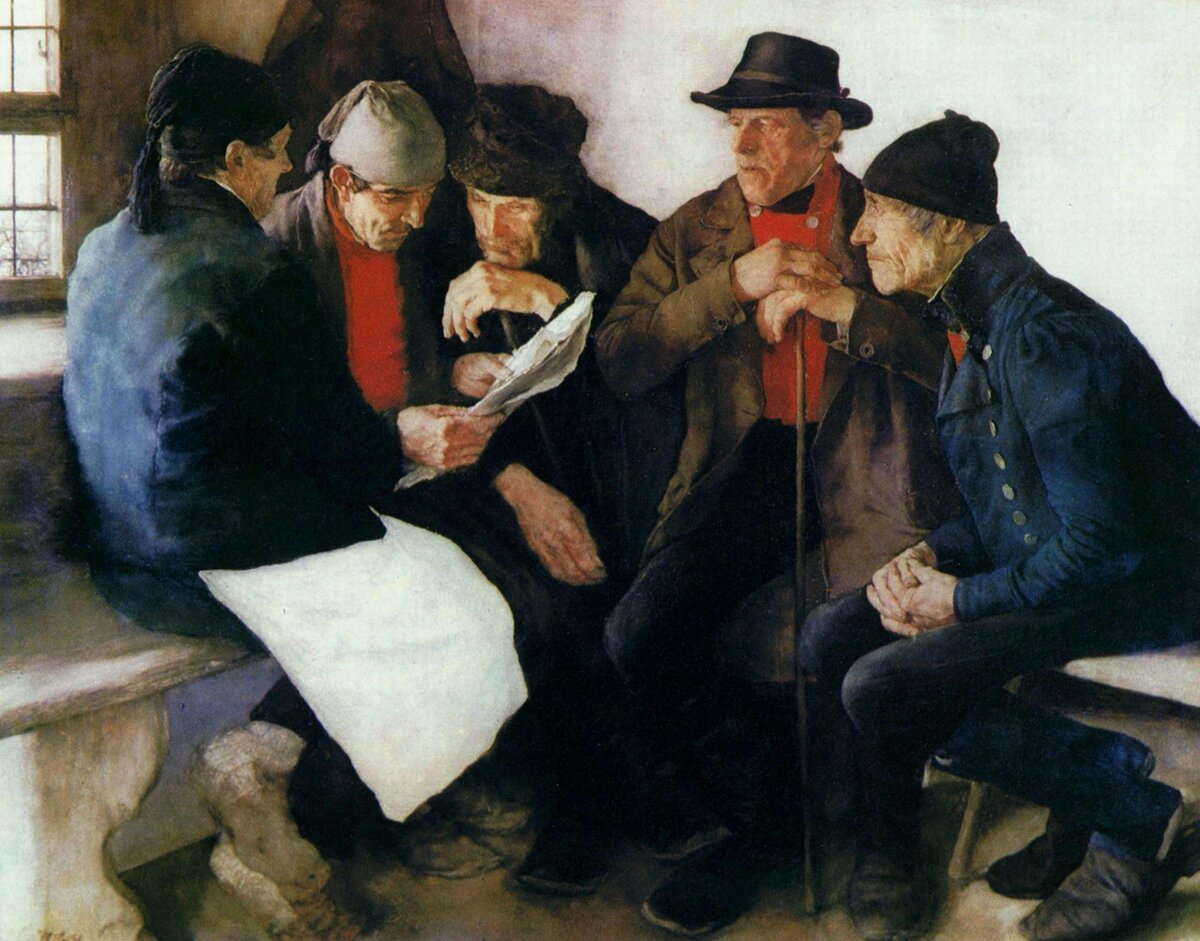Abstract
Wilhelm Leibl (1844–1900) originally planned to title this painting
Latest News. As he wrote to his
mother, “My painting shows five peasants who have huddled together in a
small rustic room, apparently to discuss some matter of village politics
because one of them holds in his hand a piece of paper that looks like
an old land-registry notice. They are real peasants, whom I paint as
true to nature as I can; the room is real too, because I paint the
picture while I am in it.” (Götz Czymmek and Christian Lenz, eds.,
Wilhelm Leibl zum 150. Geburtstag.
Heidelberg: Edition Braus, 1994, p. 67.) Leibl later titled his work
Peasants in Conversation
[Bauern im Gespräch], but it is best
known under the name given to it by the contemporary art trade:
The Village Politicians
[Die Dorfpolitiker]. It was painted
while Leibl was living in Unterschondorf am Ammersee in rural Bavaria.
This painting contributed to a re-evaluation of Leibl among right-wing
art critics of the 1870s. He went from a quasi-oppositional painter of
“common” subjects (à la Gustave Courbet) to a “Holbein-like” chronicler
of Germany’s rural essence.
